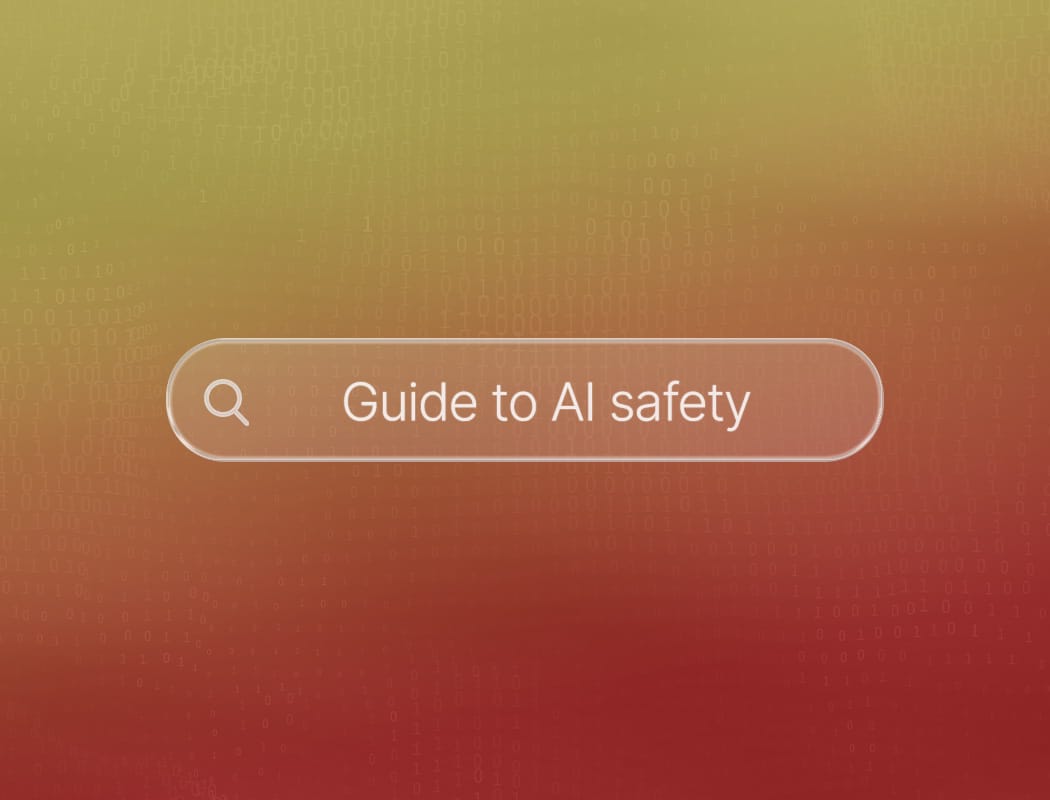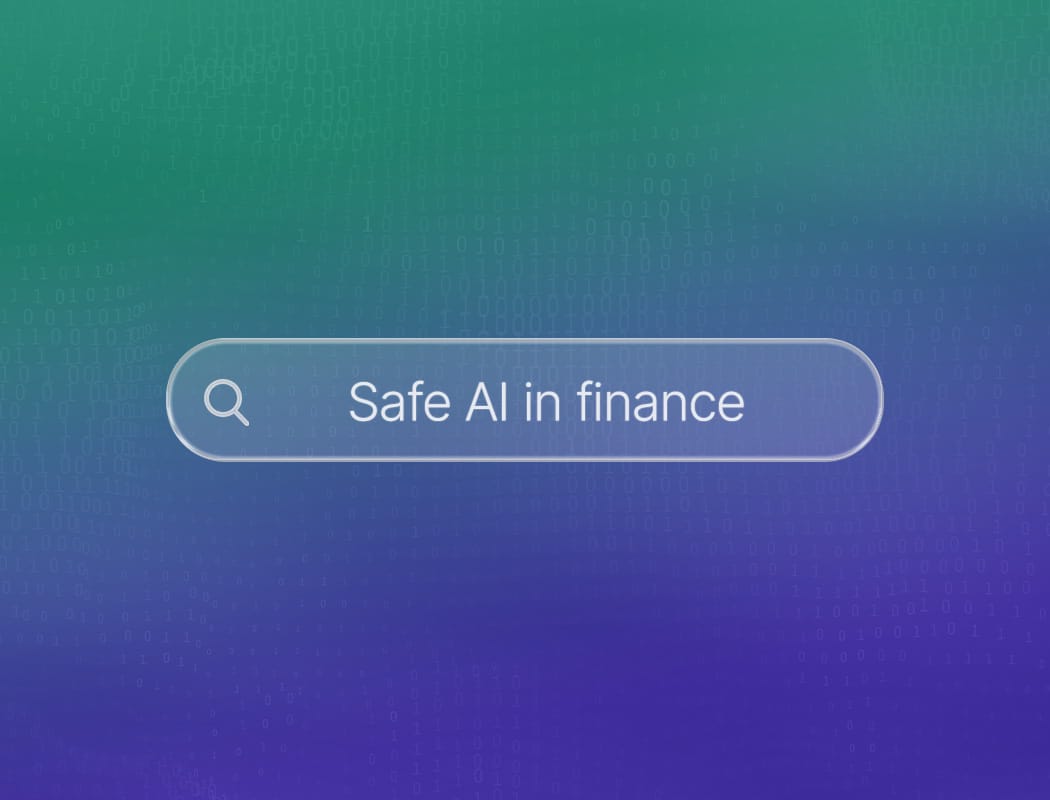What is AI safety?
AI safety is all about making sure artificial intelligence systems do what we want them to do, and nothing more. Imagine building a robot to help you clean your room. You want it to pick up socks, not throw your favorite book out the window.
That’s where AI safety comes in. It’s a set of rules, checks, and balances that help prevent smart machines from causing harm or acting unpredictably. Researchers and engineers work together to spot AI risks before they become problems.
What AI safety research actually looks like
AI safety isn’t one thing, it’s a toolbox. Researchers are trying to shape model behavior (what the system says or does) and understand its internals (how it “thinks”) so that AI systems remain useful, controllable, and predictable. Two big research families show up again and again:
- Behavioral alignment focuses on teaching AI models to act in line with human intent. Instead of coding in thousands of rigid rules, researchers use methods like Reinforcement Learning from Human Feedback and Constitutional AI.
- Mechanistic interpretability, on the other hand, opens the black box. This research aims to reverse-engineer what neurons and attention heads inside large models are doing. Understanding these inner patterns helps researchers detect, predict, and control behaviors before they manifest in harmful ways.
The future of AI safety research
AI safety research doesn’t stand still, it’s evolving quickly. As models become more powerful and integrated into daily life, researchers are rethinking how to keep them aligned, predictable, and genuinely beneficial.
A growing focus is scalable oversight. As AI systems begin tackling complex, open-ended problems researchers are experimenting with structures where AIs help evaluate and supervise other AIs.
Methods like AI debate and iterated amplification let systems explain and critique their reasoning, providing a kind of collective intelligence that can make oversight more robust and less dependent on individual judgment.
Also the policy landscape is moving from principles to enforcement. Governments that once issued voluntary guidelines are now turning them into binding regulations. The EU AI Act, which entered into force in August 2024, introduces phased rules.
At the same time, international cooperation is growing. The UK’s International Scientific Report on the Safety of Advanced AI, chaired by Yoshua Bengio, is part of a broader global effort to align technical progress with policy oversight.
What are the main concerns about AI safety?
AI safety is a topic that sparks both curiosity and concern. As artificial intelligence becomes more powerful, people want to know how we can keep it under control.
The main concerns about AI safety revolve around the risks of unintended consequences, loss of human oversight, and the potential for misuse.
AI safety can help organizations and individuals navigate these challenges by outlining best practices and ethical considerations. However the conversation about AI safety is far from simple. It’s a moving target, shaped by new discoveries and shifting public expectations.
Unintended consequences and bias
One of the biggest worries is that AI systems might do things we never intended. Algorithms learn from data, but if that data is flawed or biased, the results can be unpredictable. Imagine an AI that makes hiring decisions based on historical data.
If that data reflects past discrimination, the AI could reinforce those same patterns. An AI safety guide often stresses the importance of transparency and regular audits to catch these issues early.
But the challenge remains: how do you spot a problem before it causes harm?
Loss of control and misuse
Another major concern is losing control over advanced AI systems. As machines become more autonomous, there’s a risk they’ll make decisions without human input or oversight.
This opens the door to misuse, whether intentional or accidental. For example, someone could use AI to spread misinformation or automate cyberattacks.
Existential and long-term risks
Beyond immediate concerns, some experts worry about the long-term implications of highly advanced AI. If systems eventually surpass human intelligence, they could develop goals or behaviors misaligned with human values.
This scenario, sometimes called the “alignment problem”, raises questions about how to ensure AI continues to act in humanity’s best interests.
Preventing such outcomes requires careful design, ongoing oversight, and international cooperation to set safety standards before technology outpaces regulation.
Which strategies can improve AI safety?
AI safety is a growing concern as artificial intelligence becomes more powerful and widespread. The risks are real, but so are the solutions.
If you want to build or use AI responsibly, you need to know which strategies can actually make a difference. An effective AI safety guide will always start with the basics: clear rules, careful monitoring, and a willingness to adapt as technology evolves.
But what does that look like in practice? Let’s explore two key strategies that can help keep AI systems safe, reliable, and aligned with human values.
Building transparency into AI systems
Transparency is the foundation of any good AI safety. When you can see how an AI system makes decisions, it’s easier to spot problems before they spiral out of control.
This means documenting algorithms, tracking data sources, and making sure there’s a clear record of every change. Transparent systems allow teams to audit results, explain outcomes, and fix issues quickly.
It also helps users trust the technology, since they know there’s nothing hidden behind the curtain. In short, transparency turns AI from a black box into something everyone can understand and improve.
Testing and monitoring for real-world safety
No AI safety guide is complete without ongoing testing and monitoring. Even the best-designed systems can behave unpredictably once they’re out in the world.
That’s why regular stress tests, simulations, and real-time monitoring are essential. These strategies catch errors, bias, and unexpected behaviors before they cause harm. Teams should set up alerts for unusual activity and review performance data often.
By treating AI safety as an ongoing process, not a one-time checklist, organizations can respond quickly to new challenges and keep their systems safe for everyone.
How does AI safety impact technological development?
AI safety shapes the way technology grows and changes. It acts as both a guide and a guardrail, making sure that new inventions do not cause harm.
When developers think about AI safety, they are not just building smarter machines. They are also building trust, responsibility, and a future where technology helps more than it hurts.
This careful approach can slow things down at times, but it also leads to stronger, more reliable progress in the long run.
Balancing innovation with caution
AI safety forces creators to pause and consider the risks before launching something new. Instead of racing ahead with every idea, teams must weigh the benefits against possible dangers.
This means more testing, more reviews, and sometimes, more waiting. But this caution is not just about avoiding disaster. It is about making sure that what gets released is truly ready for the world.
By slowing down, developers often find better solutions and spot problems early. In the end, this balance between speed and safety leads to technology that lasts longer and works better for everyone.
Building public trust in new technologies
When people hear about AI, they often worry about losing control or being replaced. AI safety addresses these fears by showing that someone is watching out for them. Clear rules and open communication help users feel more comfortable with new tools.
If a company can prove that its AI is safe, people are more likely to use it and recommend it to others. Trust is hard to earn and easy to lose, so safety becomes a key part of any successful launch. Over time, this trust allows for even bigger leaps forward, because people know their well-being comes first.
Encouraging collaboration across industries
AI safety is not just one company’s job. It brings together experts from many fields: engineers, ethicists, lawyers, and even artists. These groups work together to set standards and share best practices.
Sometimes, they even share data and research to solve common problems. This teamwork speeds up learning and helps everyone avoid the same mistakes.
When industries collaborate, they create a safer environment for new ideas to grow. The result is a stronger, more united approach to technological development.
Shaping the future of regulation and policy
As AI becomes more powerful, governments and organizations step in to set the rules. AI safety plays a big role in shaping these policies. Developers who focus on safety help write the guidelines that everyone else will follow.
This can mean stricter rules, but it also means clearer paths for innovation. Good policies protect people without stopping progress. They make sure that technology serves society, not just a few individuals.





